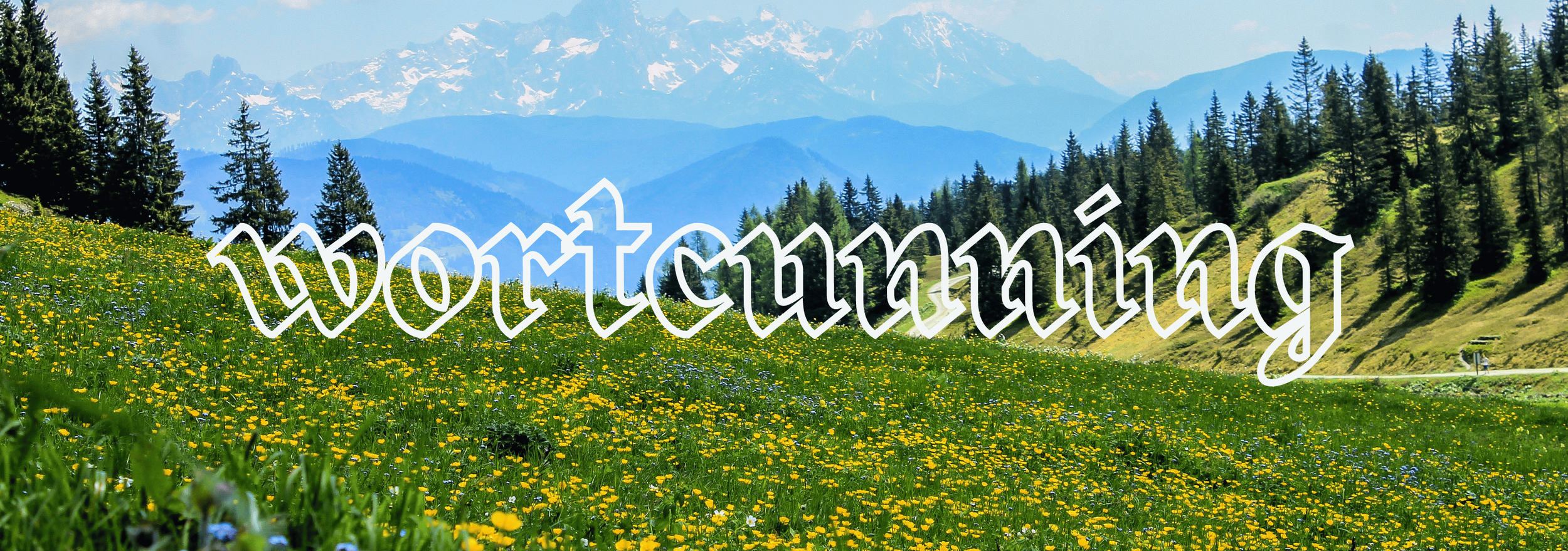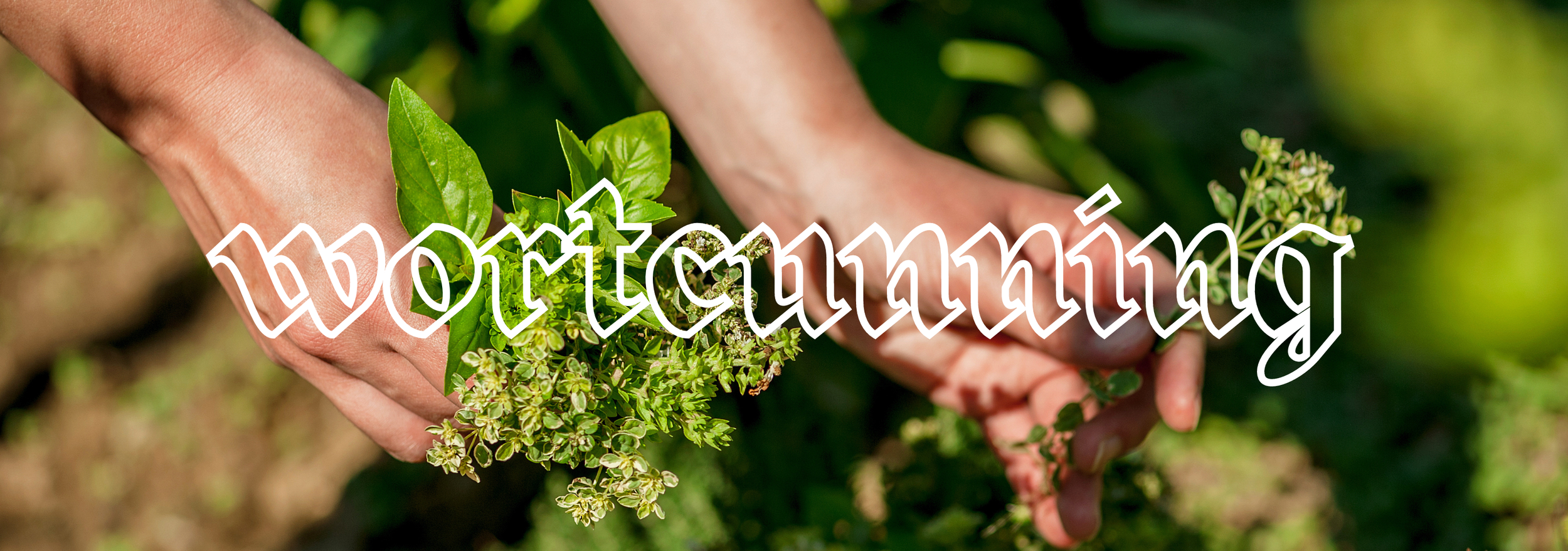The Wortcunning Way
Shaman (of infinite varieties from Celtic to Witch), plant spirit worker, Hedgecrosser, Verdant Sorcerer… these are just a few titles that might aptly describe the kind of work I do, how I do it, and how I learned to do it. A few of them (Shaman, Witch, Celtic) I personally would never use for many reasons, and a couple of them (Plant Spirit Worker, Hedgecrosser, Sorcerer) I definitely use… but there’s one term that really speaks to my practice and my path better than any other- Wortcunner.
Okay, I get it, this is not the prettiest word you’ve ever seen. In fact, part of why I don’t use this word in my more public-facing presentations is because it really just tends to turn people off. But, hear me out here, this word is ripe with meaning, history, and power, and it’s a word I would love to introduce you to- and maybe help you learn to love!
First, let’s begin with a wee bit of etymology. You know I love words- especially how the names of plants became the names of plants. So, let’s start with that.
Wortcunning is actually made up of two distinct and super relevant words: wort and cunning.
WORT is an ancient word with roots in the proto-indo-european reconstructed lexicon *wrad. In Old English it becomes wortan maintains its ancient meaning of ‘plant, root, vegetable, herb, spice’.
CUNNING comes from the Old English cunnan meaning ‘learned, skillful, possessing knowledge’ which is rooted in the ancient proto-indo-european gno-, to know. You may recognize that prefix of *gno- as appearing in other words like gnosis and know! By the 14th century, the term cunning was in full use and implied not only skillful knowledge, but also a knowledge which was uncommon, hidden, mysterious, or hard-won.
So, we put these two neat words together and we get a whole story about wortcunning and wortcunners themselves. These are folks who know the plants. Not just botany, not just herbal medicine, not just lists of ‘good for’, not even just folkloric tales and myths… but a deep, personal knowing that only comes by direct and sorcerous contact with the spirit of the plants.
For me, wortcunning is the lifelong, fully invested, spiritual practice of working as a go-between; connecting the realm of the plants to the wild world of the humans. for medicine, magic, ritual, wisdom, guidance, and harmony. It also shows a deep reverence for the extant plant lore that has survived from our herbwise ancestors- those both near and far along the timeline. When engaged with these wild ways which are rooted in the deepest annals of time, we learn how to learn directly from the plants- and put what they teach us to work in service of harmony.
How Does a Wortcunner Learn Their Artes?
From established teachers or mentors who are already engaged with and initiated into the mysteries of the green realm. In ancient times (near and far), each small community may have had their own practicing cunning person who would have trained up one or two apprentices over their lives. Direct teaching from a cunning person brings both practical wisdom and initiation which is passed from heart to heart.
The greatest lesson a wortcunner learns is how to be welcomed into the world of the plants and how to learn directly from those plants. Most of our ancestral plant lore was gained by hard-won, sorcerous practices by cunning folk in direct relation with the plants. What we know from the folkloric perspective about our plant allies was taught to us by them- there is no greater authority on the ways of the plants than the plants themselves! So, learning to communicate clearly and reliably with plants is essential.
Cultural traditions around plants including flklore, stories, ,myths, taboos, appearances in great tales, charms, associations, inclusion in festivals, and so on all preserve deep green wisdom which can be extracted by the herbwise cunning person.
Personal experience over decades of work with the plants, with plants and humans, and with the way plants show up and engage with their own surroundings acts works to build the cunning person’s own grammar of plant spirit work.
What Does a Wortcunner Do?
The contemporary expression of the cunning artes may look quite different than they did even just a couple of hundred years ago- but the roots of the work remain the same as they always have. Our work is special in its ability to adapt with the changing times and the ways in which cultures and traditions ebb and flow.
Work as stewards and protectors for the flora and fauna of their immediate areas- learning about ecology, participating in preservation initiates, supporting land back actions for indigenous people, picking up trash, and protecting sacred spaces.
Learning about the plants that thrive in their community spaces in such depth and breadth that no plants must be imported from outside the bioregion for medicine, magic, or ritual.
Learning the profound artes of herbalism beyond the allopathic, reductionist, and pop methods so common these days. Exploring anatomy, pathology, physiology, energetics, constitution and temperament, assessment methods, formulation techniques, medicine crating, dosing and protocol crafting, patient support and dialogue methods, and all other skills required to define, make, and distribute medicine to the community.
Be in deep personal relationship with one’s tutelary plant allies, local plants, and the plant spirits all so that they can be as mentors, guides, guardians, and initiators along the way.
Have a deep working knowledge and understanding of ancestral folklore surrounding local plants and preserve that lore by learning, remembering, and telling stories.
Be in relationship with the sorcerous virtues of the arcane plant spirits for the enacting of magic, transformation, harmonization, and effects on the spaces around the physical.
Teach individuals and the community about the importance of plants, plant symbolism, plant lore, and plant respect.
Devote time, energy, and resources to slowing down to tree speed, sitting with plants, and learning from them- often the most difficult challenge of all in the modern day.
While wortcunning is part of a specific part of the world and even a specific timeframe, the spiritual ways it represents and embodies are timeless, which is how it’s possible to pursue, practice, and work a contemporary plant spirit path in the here and now.
I’ve got a short class on the ways of the wortcunner for you to watch here… Enjoy!




